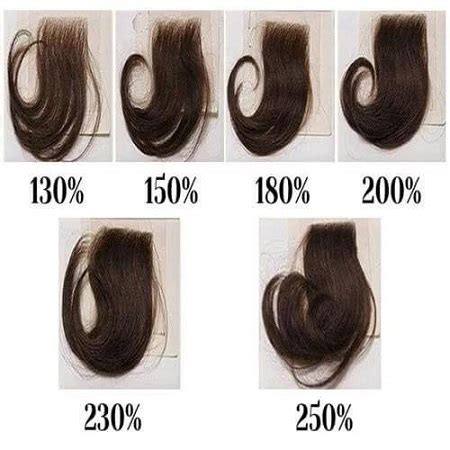Introduction
In the realm of film technology, selecting the appropriate film density is crucial for achieving optimal results. The density of a film refers to the amount of light it allows to pass through, which directly affects the image’s exposure, contrast, and overall quality. Among the two prominent film densities – 260 and 180 – understanding their differences is essential for photographers and filmmakers alike.

260 Density: Enhanced Contrast and Vibrancy
260 density film is characterized by its higher density, allowing less light to penetrate. This attribute results in images with increased contrast, making it ideal for situations where distinct tonal separation is desired.
Benefits of 260 Density:
- Enhanced contrast: Deeper blacks and brighter whites, creating a more striking visual impact.
- Increased vibrancy: Saturated colors, resulting in more vibrant and eye-catching images.
- Greater detail: Improved tonal range, capturing finer details with greater precision.
180 Density: Reduced Grain, Higher Sensitivity
180 density film, on the other hand, is less dense, allowing more light to pass through. This results in images with finer grain and higher sensitivity, making it suitable for low-light conditions.
Benefits of 180 Density:
- Reduced grain: Less visible film grain, producing smoother and more refined images.
- Higher sensitivity: Greater ability to capture images in dimly lit environments.
- Increased exposure latitude: Wider range of acceptable exposures, providing greater flexibility in lighting conditions.
Applications for 260 Density vs 180 Density
The choice between 260 and 180 density film depends on the specific application and desired outcome.
260 Density Suitable for:
- High-contrast scenes (e.g., landscapes with dramatic skies)
- Portrait photography (to accentuate features and textures)
- Still-life photography (to capture fine details and vibrant colors)
180 Density Suitable for:
- Low-light conditions (e.g., night photography, indoor events)
- Sports photography (to freeze fast-moving subjects)
- Photojournalism (to capture scenes with minimal grain)
Table 1: Comparative Characteristics of 260 and 180 Density Films
| Feature | 260 Density | 180 Density |
|---|---|---|
| Light Transmission | Less | More |
| Contrast | High | Low |
| Grain | Coarse | Fine |
| Sensitivity | Lower | Higher |
| Applications | High-contrast scenes, portraiture | Low-light conditions, photojournalism |
How to Choose the Right Density for Your Application
- Determine the Desired Exposure: Consider the lighting conditions and the desired exposure level. 260 density is suitable for bright or backlit scenes, while 180 density is better for dimly lit situations.
- Consider the Subject and Detail: If capturing intricate details and emphasizing contrast are important, 260 density is recommended. For smoother and less grainy images, 180 density is more appropriate.
- Experiment and Test: The best way to determine the optimal density is to experiment with different films and settings. Experimentation allows you to identify the combination that yields the desired results under various conditions.
Inspirational Applications
“Grainclusion”: Integrating film grain into digital images for a unique and evocative aesthetic.
Table 2: Sample Applications and Film Density Recommendations
| Application | Film Density |
|---|---|
| Architectural photography | 260 |
| Street photography (night) | 180 |
| Wildlife photography (low light) | 180 |
| Macro photography | 260 |
Conclusion
260 and 180 density films offer distinct advantages and limitations, making them suitable for different photographic applications. By understanding the nuances of each density, photographers can optimize their film choices to achieve the desired results, whether it’s enhancing contrast, reducing grain, or capturing scenes in low-light conditions. Continuous experimentation and exploration of innovative applications can unlock the full potential of film photography.
FAQs
-
What factors affect film density?
Film density is influenced by factors such as film emulsion, development process, and exposure time. -
Can film density be adjusted during the development process?
Yes, film density can be controlled by varying the developer concentration and development time. -
Is 260 density always better than 180 density?
No, the choice depends on the specific application and desired outcome. 260 density offers higher contrast and vibrancy, while 180 density provides finer grain and higher sensitivity. -
How do I determine the optimal film density for my camera?
Experiment with different film densities and camera settings to identify the combination that produces the desired results for your specific photographic style. -
What is a “push film” technique?
Push film is a technique where a film is deliberately underexposed during shooting and overdeveloped to achieve higher sensitivity. This can result in increased grain and contrast. -
What is the ISO rating of a film related to density?
ISO rating indicates the film’s sensitivity to light. Higher ISO films are more sensitive and generally exhibit lower density (180). -
Can film density be measured objectively?
Yes, film density can be measured using a densitometer, which quantifies the amount of light passing through the film. -
What is the relationship between film density and resolution?
Higher film density generally correlates with higher resolution, as it allows for greater tonal separation and finer detail. -
How does film density affect archival quality?
Higher film density tends to increase archival stability, as it reduces the impact of fading and color shifts over time. -
What are emerging trends in film density research?
Contemporary research explores advanced emulsion formulations, specialized development techniques, and digital post-processing methods to optimize film density and image quality.
